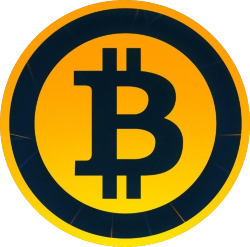The cryptocurrency landscape is no stranger to controversy, and recent events surrounding Binance’s decision to list Solana-based memecoins, The AI Prophecy (ACT) and Peanut the Squirrel (PNUT), have reignited debates. Community members have raised serious questions regarding the integrity of these listings, suspecting that they might constitute a classic case of a pump-and-dump scheme. This skepticism is well-founded given the significant price spikes these coins experienced after listing — ACT surged over 1,000%, while PNUT leveraged a respectable 100% increase, stirring both excitement and suspicion in equal measures.
CoinMarketCap data reveals that ACT’s market cap skyrocketed to over $400 million almost instantaneously following its Binance listing, whereas PNUT benefitted similarly as it resonated with the internet’s love for quirky and memorable characters. However, these rapid gains have led to feelings of unease in the community, sparking a whirlwind of speculation about the motivations behind Binance’s choice of new listings.
Petition Against Pump and Dump Practices
Leonidas, a notable figure in the crypto realm and co-founder of Ord.io, has voiced concerns over the implications of Binance’s practices. He initiated a petition that aims to critique Binance’s strategy around memecoin listings. Leonidas argues that the system employed by Binance may be contributing to a marketplace environment that allows insiders to profit at the expense of retail investors. His assessment pinpoints a troubling trend: the prevalence of low-market-cap “dead” memecoins, allegedly controlled by a small group of investors who can afford to pay exorbitant fees for favorable listings.
In a landscape where transparency is vital, Leonidas emphasizes the need for Binance to disclose its listing criteria and any associated fees, including whether any payments are made in tokens. This call for transparency is pivotal for safeguarding community interests and preventing practices that may harm the average investor.
Analyzing broader trends, it appears that Binance, historically known for its stringent listing regulations, may be abandoning these practices. With the increasing popularity of memecoins, especially those built on the Solana blockchain, the exchange seems to be relaxing its standards. Loopify, a pseudonymous game studio founder, has speculated that this may be a strategic move to prevent user migration to decentralized exchanges (DEXs).
This shift raises essential questions about the long-term implications for both Binance and the cryptocurrency ecosystem as a whole. While lenient listing practices can invigorate market activity, they also risk perpetuating scenarios where investors fall victim to manipulative practices like pump-and-dump schemes.
Data compiled by on-chain analyst Ai_9684xtpa revealed that 12 out of 15 memecoins listed by Binance in 2024 witnessed significant price escalations post-listing. Interestingly, 60% of these memecoins originated from the Solana blockchain, with Ethereum accounting for 26.7%. This illustrates a market dynamic that places a premium on community enthusiasm and viral potential rather than strict market valuations.
Contrary to expectations, Binance’s current selection criteria appear to favor coins with energetic community backing over those with established market caps. As a consequence, the listings invite a wider array of low-cap tokens into the marketplace, which can enhance volatility and speculation. While this can foster a vibrant trading environment, it simultaneously invites risks for uninformed investors.
As the crypto community continues to grapple with these changes, one thing remains clear: the landscape demands accountability and a proactive approach to prevent market manipulation. Investors must remain vigilant, scrutinizing not only the merits of individual memecoins but also the regulatory practices of platforms like Binance.
The call for transparency surrounding listing protocols is not merely a matter of procedural rigor; it is central to ensuring a fair trading environment that benefits all participants. As the debate unfolds, the focus should remain on creating robust frameworks that curtail potential abuses, ensuring that the cryptocurrency market remains a fair playing field for everyone involved. As the situation develops, it will be intriguing to see how Binance responds to these growing concerns and whether it adapts by reinforcing its commitment to safeguarding retail investor interests.


















